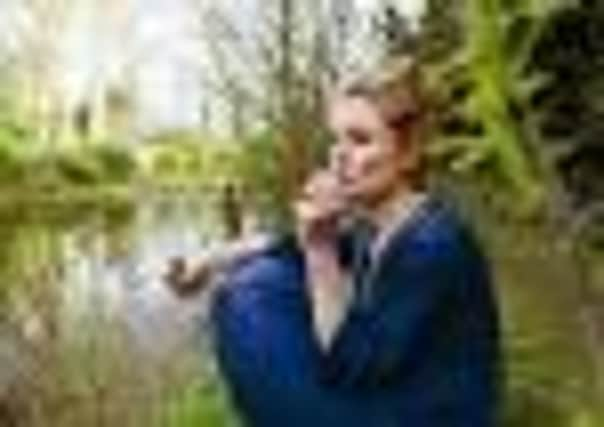Gardens: If you know what you’re looking for there’s free food everywhere – even for the urban forager


The tasty secrets of garden and wild plants are revealed in a new book by gardener and author Alys Fowler. In The Thrifty Forager, Fowler points out that foraging can be practised in the city as well as the countryside – as long as you’re prepared to invest time in getting to know your local plants. “Urban areas are just as good as rural, sometimes better as a lot of ornamental plants like Japanese flowering quince are planted in urban areas and you’d be hard pressed to find one growing wild,” she says.
“Parks, around the back of allotments (not the allotments themselves as that’d be stealing) and those weird bits of no-man’s land are all great places to forage. Even street trees can offer up a bounty. I know a street in London lined with almonds.”
Advertisement
Hide AdAdvertisement
Hide AdThe first question that many people ask about foraging is, “is it safe?” “Everyone likes blackberries – you have to start on that principle and then realise that there are free plums, apples, pears, walnuts and quinces to be found,” says Fowler. “All you need to do is give them a good scrub. It’s that simple.
“You make choices when you forage to choose areas that are away from heavy pollution, so the fear of it being any more dirty than a supermarket apple is a little unfounded. You get to actually see the tree where they came from, which is more than you can say for a lot of bought food.”
On the subject of the law, even weeds have an owner, or at least the land they’re growing on does. If you’re going to gather wild food, you are supposed to ask permission from the landowner and digging up entire plants is illegal. In some cases asking for permission to forage isn’t practical and it’s unlikely your local landowner or council would refuse you the right to pick a few dandelion leaves, but it’s best to try and ask wherever possible. As for using foraging as a way to beat the recession, Fowler says: “Instead of seeing it as a money-saving exercise, I think it’s better to look at it as a great way to engage in your local environment. It’s healthy food because it’s nutritious but you also have to walk a lot to get it. It’s better than the gym, in my book, anyway.”
The Thrifty Forager includes case studies from the UK and overseas, sharing some of the innovative activities foragers are getting up to. Fowler travels to Norway to meet Stephen Barstow, a man who spent three days making the world’s largest salad, complete with 536 ingredients. For those who’d like to be able to forage within the confines of their own garden, he is the perfect example to follow, having researched the wild plants that communities around the world eat and found the garden- worthy version. Fowler found a few new favourites on the trip, including species of hosta, including Hosta sieboldiana, H. “Sagae” and native Japanese H. montana. You’ll have to fight off the slugs for the young tender stems and shoots of this traditional delicacy in Japan. Other discoveries on the Norway trip included the Arctic raspberry, bee balm (Monarda Didyma) which can be used as an aromatic tea or the leaves can be added to salad, and Anise hyssop, which can be used in the same way.
If you ever get bored with your salad ingredients, this book will certainly expand your horizons. For blander greens, you might want to try fat hen, salad burnet, borage, mallow or lemon balm. For a stronger taste, try dandelions, Good King Henry, sorrel or sow thistle. “Wild salads take a little getting used to as they have very strong distinct flavours that a lot of people aren’t familiar with,” says Fowler. “But young dandelion leaves with a little haddock and a few new potatoes is a fine salad that I bet most people would love. I also like young sow thistle leaves or leaves from lime trees (Tilia species) are wonderful – just like lettuce, but without a slug problem.”
Traditionally foraged plants such as crab apple, wild mints, brambles, damsons and sloes, rose hips, elderflowers and so on might be familiar, but there are plenty of other plants which might well come as a surprise. All mahonia species, for example, are edible and the berries have long been used for jams and juices in their native homes (but be warned, the acidic berries are far too bitter to eat raw). Bellflowers (Campanula) are also edible and attractive in the garden – the flowers can be stuffed with ricotta cheese or sprinkled in salads.
You could help tackle the invasive weed Himalayan balsam by snacking on its seeds, while another nibble recommended by Fowler is Fuchsia berries, which she describes as having a “watery honey with a peppery twist” taste and which are her “on the way to the shop” snack, as so many can be found in front gardens.
Whether it’s enlightening us about the year-round seasonal interest and tasty berries provided by the Juneberry tree (Amelanchier Lamarckii) or sharing details of exciting projects such as Los Angeles City Fruits and Incredible Edible Todmorden, The Thrifty Forager makes a refreshing addition to the gardener’s bookshelf.
Advertisement
Hide AdAdvertisement
Hide Ad“I think a lot of people are cottoning on to this food now that forest gardening is beginning to take off,” says Fowler. “It’s always interesting to find out about how other people use what we consider ornamentals. And it’s nice to know that there is some easy foraging to be done too, what with many of the weeds in your garden offering up quite a lot with very little work on your behalf.”
• The Thrifty Forager (£16.99) is published by Kyle Books and is out now.